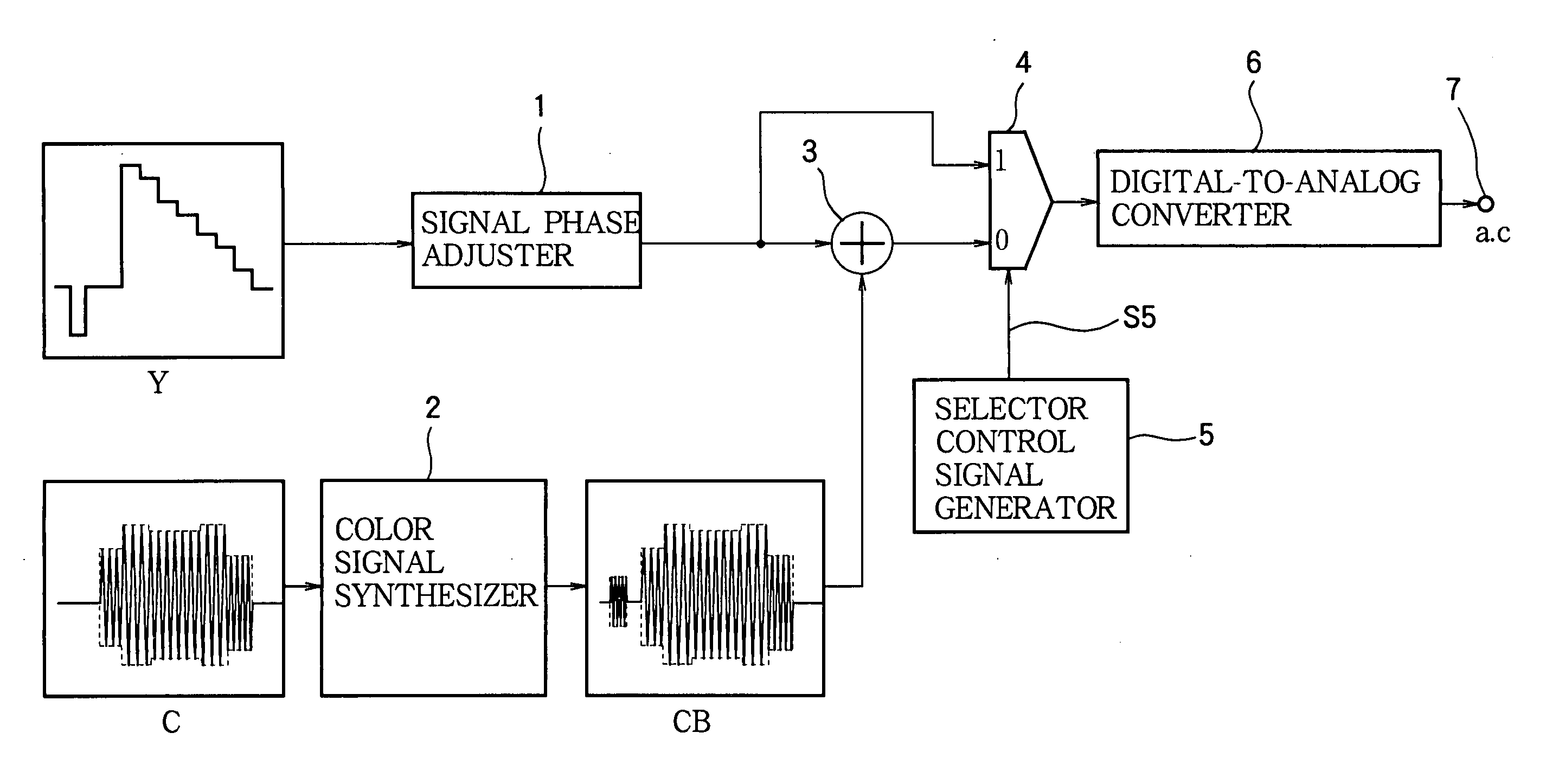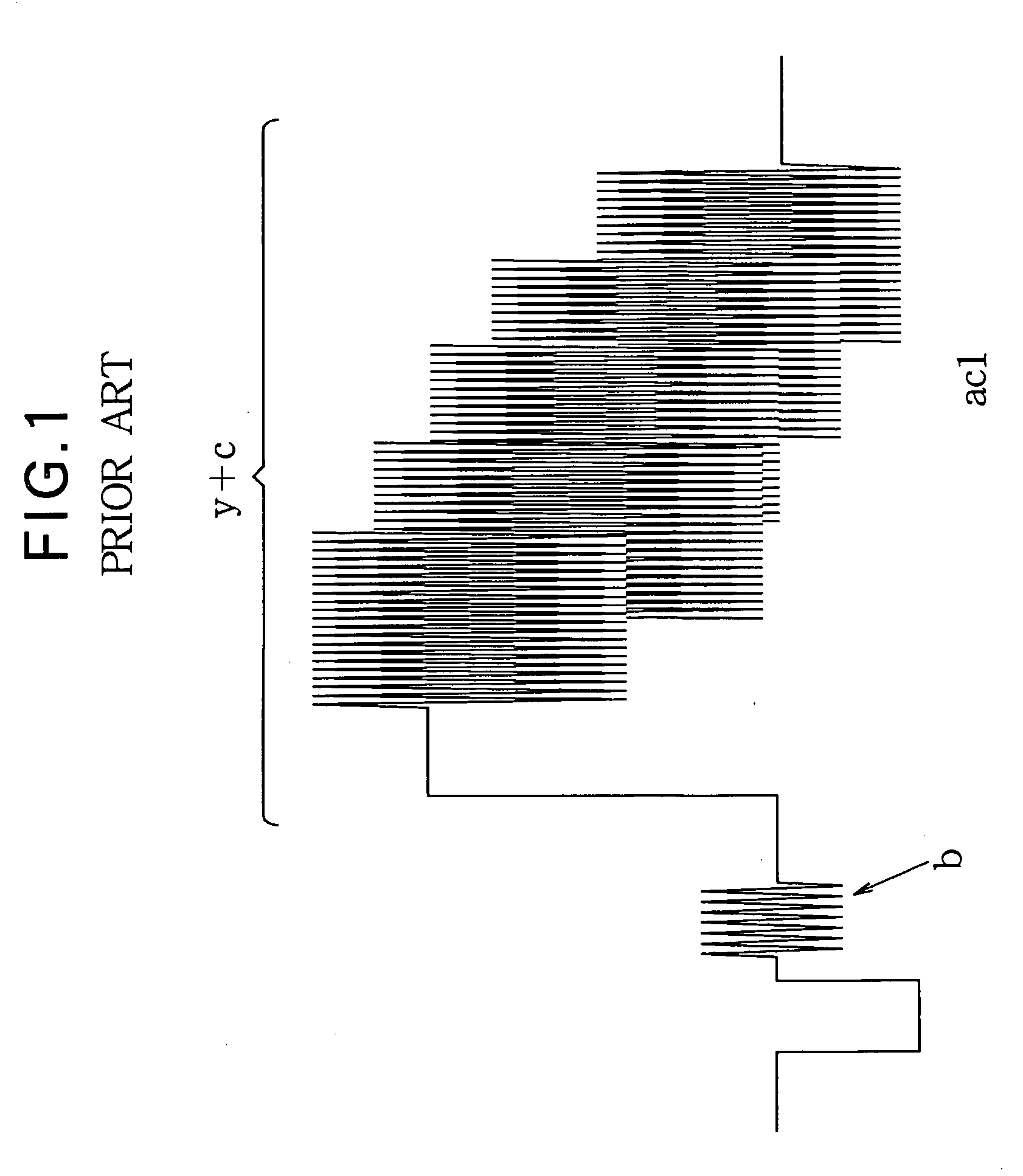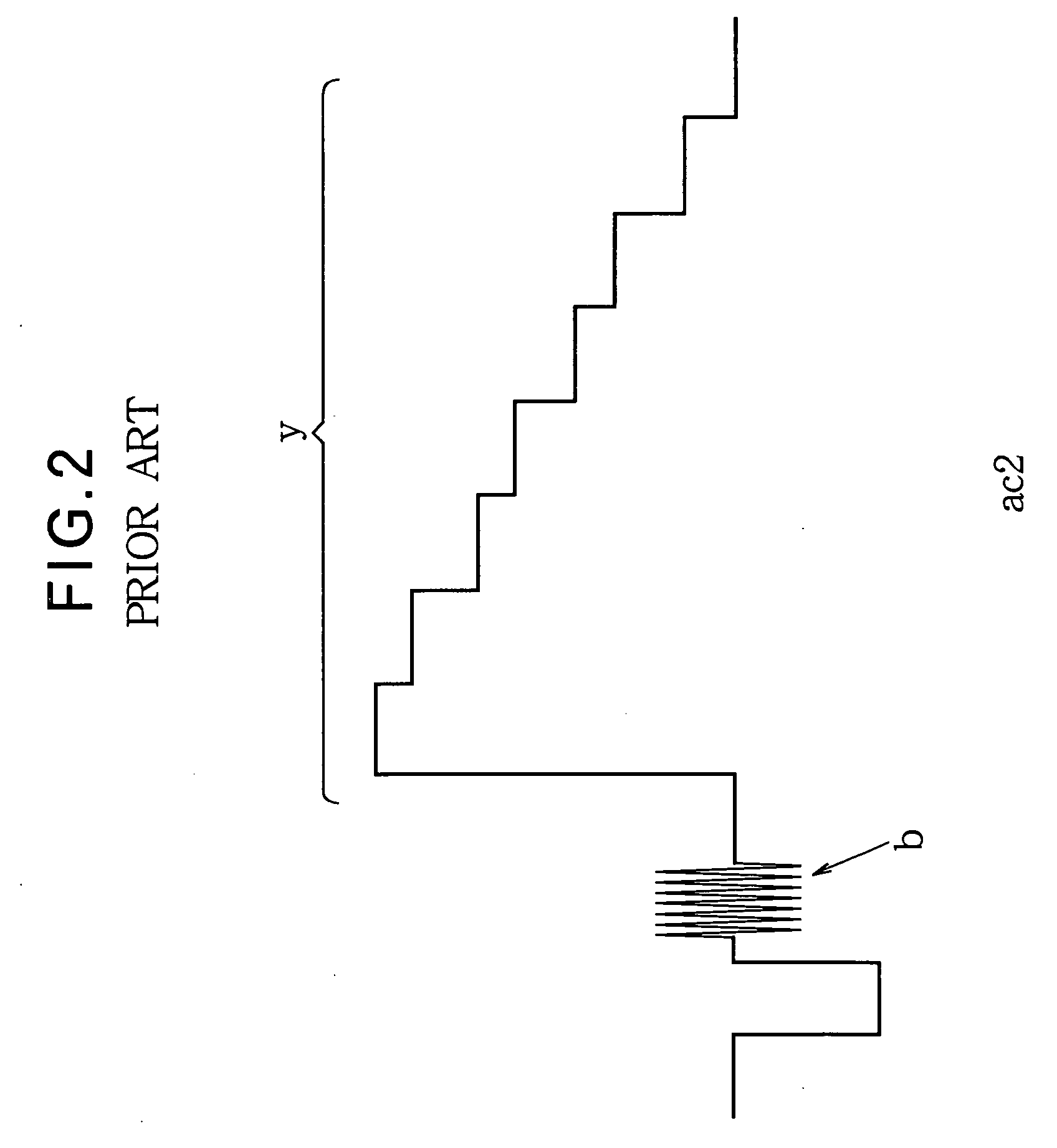Video signal generator generating monochrome signal without color noise
- Summary
- Abstract
- Description
- Claims
- Application Information
AI Technical Summary
Benefits of technology
Problems solved by technology
Method used
Image
Examples
first embodiment
[0029] Referring to FIG. 3, the first embodiment is a video signal generator that receives a digital luminance signal Y and a digital chrominance signal C, the digital chrominance signal C including of a pair of color difference signals. A signal phase adjuster 1 comprising, for example, a plurality of flip-flops delays the digital luminance signal Y to bring it into phase with the digital chrominance signal with which it will be combined. A color burst signal synthesizer 2 generates a digital color burst signal, adds the color burst to the digital chrominance signal C, and modulates the sum onto a subcarrier signal to generate a modulated digital chrominance signal CB including a modulated color burst. An adder 3 adds the delayed digital luminance signal to the modulated digital chrominance signal. The output terminal of the adder 3 is connected to one input terminal of a selector 4; this input terminal is marked ‘1’ in the drawing and will be referred to below as the logical one i...
second embodiment
[0041] Referring to FIG. 8, the second embodiment is a video signal generator that differs from the video signal generator in the first embodiment in having a color signal decision circuit 5A in place of the selector control signal generator 5 in FIG. 3. Other structures are the same as in the first embodiment.
[0042] The color signal decision circuit 5A decides, by comparing the average amplitude of the chrominance signal CB with a threshold, for example, whether the chrominance signal CB represents a color video signal (if the average amplitude exceeds the threshold) or a monochrome video signal (if the average amplitude is less than the threshold) Instead of average amplitude, some other measure of signal strength, such as average power level or average modulation degree, may be used. The decision result is output as a control signal S5 (logical one for a monochrome signal; logical zero for a color video signal) that controls the selector 4 as described in the first embodiment.
[...
third embodiment
[0051] Referring to FIG. 10, the third embodiment is a video signal generator 100 that comprises the circuit in FIG. 3 or FIG. 8 and has, in addition to the composite video output terminal 7, an S-video connector with separate terminals 101, 102 for the luminance signal (output at terminal 101) and the chrominance signal (output at terminal 102). Terminal 101 is connected through an A / D converter (not shown) to the output terminal of the signal phase adjuster 1 in FIG. 3 or 8. Terminal 102 is connected through another A / D converter (not shown) to the output terminal of the color burst signal synthesizer 2. The waveforms 103 produced at the three output terminals 7, 101, 102 for a color picture differ as illustrated in FIG. 10 from the waveforms 104 produced for a monochrome picture. For a monochrome picture, the receiving device can obtain the same signal from either the composite video output terminal 7 or the S-video luminance output terminal 101.
PUM
 Login to View More
Login to View More Abstract
Description
Claims
Application Information
 Login to View More
Login to View More - R&D
- Intellectual Property
- Life Sciences
- Materials
- Tech Scout
- Unparalleled Data Quality
- Higher Quality Content
- 60% Fewer Hallucinations
Browse by: Latest US Patents, China's latest patents, Technical Efficacy Thesaurus, Application Domain, Technology Topic, Popular Technical Reports.
© 2025 PatSnap. All rights reserved.Legal|Privacy policy|Modern Slavery Act Transparency Statement|Sitemap|About US| Contact US: help@patsnap.com



